PCOST
The Public Communication of Science and Technology project (PCOST) aims to improve discourse about emerging and converging technologies.
On this page
About PCOST
The project’s mission is to provide opportunities for scholars to understand and improve the public communication of science and technology. That includes engaging faculty and students in a wide arena of scholarship including communication, media studies, computer science, design, environmental and bench sciences, and associated fields.
Our audiences include stakeholders in science, medicine and technology such as policymakers, scientists, business leaders, health practitioners and nongovernmental organizations.
Project Objectives
- Generate data on issues related to communication, public perception, program development, planning and evaluation, and other variables that affect how the public understanding.
- Support both quantitative and qualitative research in the social science of science and technology.
- Promote social science research as vital to STEM efforts across NC State’s campus and throughout North Carolina.
Leadership
David Berube
Founding Director and Professor of Communication
- Email: dmberube@ncsu.edu
- Phone: 919-515-0410
Board of Directors

- David Berube, founding director and professor of communication

- Deanna Dannels, dean of the College of Humanities and Social Sciences

- Elisa Cohen, University of Minnesota, professor and director at Hubbard School of Journalism and Mass Communication

- Norah Dunbar, University of California Santa Barbara, professor, current affiliate faculty, immediate past chair of the Department of Communication

- Kelly Martin, professor and associate dean at Rochester Institute of Technology
Members
- Maria Correa, professor of epidemiology and public health
- Marc Russo, associate professor of art and design
- Ben Watson, associate professor of computer science
- Emily Berglund Zechman, professor of civil, construction and environmental engineering
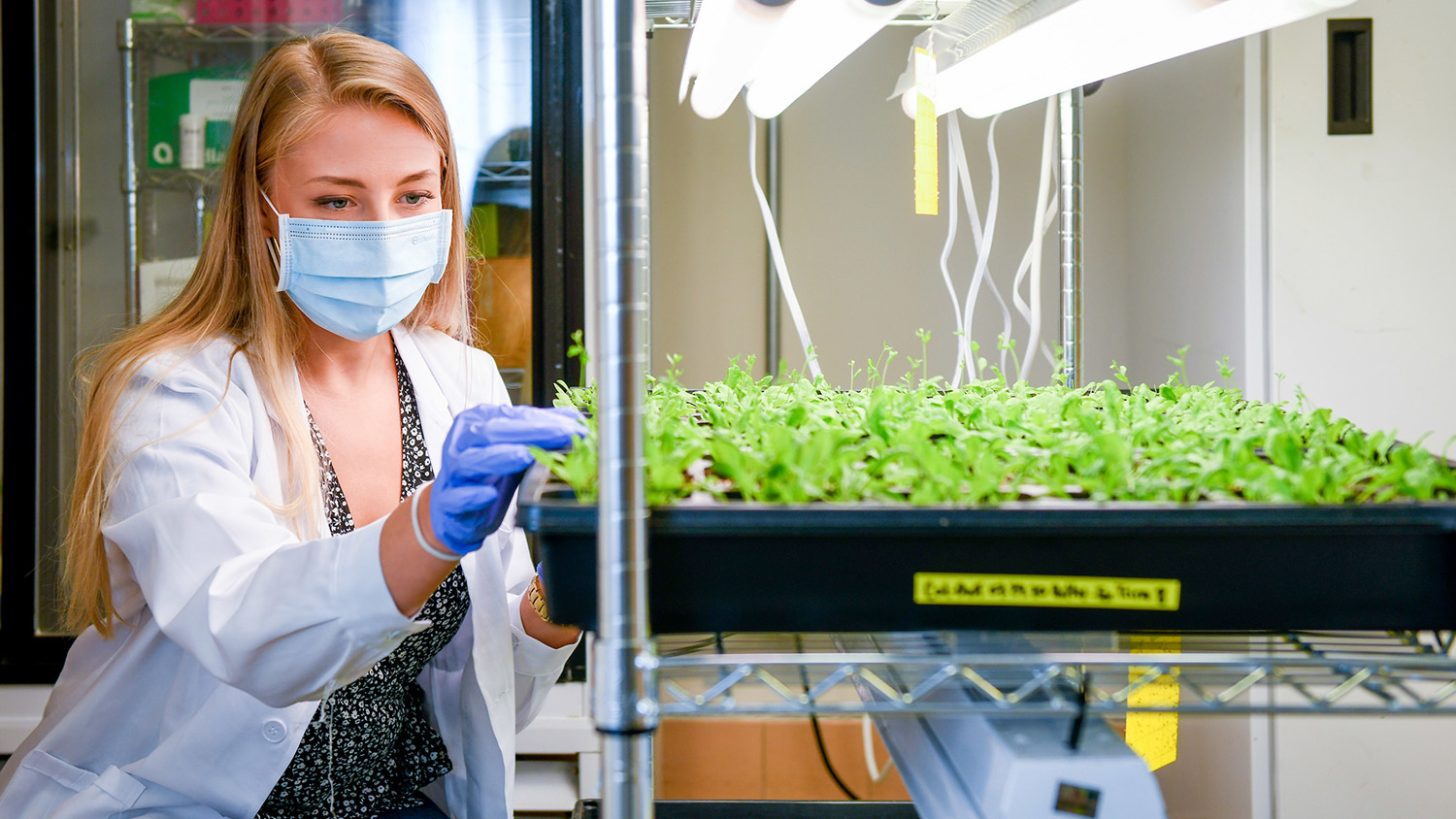
Projects
Explore our current and past projects.
Current Projects
NNCI: North Carolina Research Triangle Nanotechnology Network (RTNN) (funded)
The RTNN is a consortium of three North Carolina (NC) institutions and is proposed as a site in the National Nanotechnology Coordinated Infrastructure (NNCI) network. NC State, Duke, and UNC-Chapel Hill are all located in close geographical proximity within North Carolina’s Research Triangle. The RTNN currently offers fabrication and characterization services and education to a diverse range of users from colleges, universities, industry, non-profits, and individuals. The RTNN will bring specialized technical expertise and facilities to the National NNCI in areas that include wide bandgap semiconductors, soft materials (animal, vegetative, textile, polymer), functional nanomaterials, in situ nanomaterials characterization and environmental impact, nanofluidics, heterogeneous integration, photovoltaics, and positron annihilation spectroscopy. The RTNN strengthens the National NNCI in the areas of social and ethical implications of nanotechnology, environmental impacts of nanotechnology, and education/workforce development through interaction with industry and community colleges in the Research Triangle. All facilities engaged in this consortium have established track records of facilitating industrial research and technology transfer, strengths that further leverage the proposed site within the Research Triangle.
Research Experience for Undergraduates (RT-REU) on Hybrid Perovskite Materials (funded)
The RTNN hosts a collaborative REU site that leverages the strength of collaborative research on hybrid materials, specifically hybrid perovskites, together with the integrated nanotechnology tools of the RTNN to provide a state-of-the-art research experience on a timely research topic that has direct and tangible technological applications (e.g. solar cells, lighting, lasers). Each year, twelve students conduct research in faculty labs across the three RTNN institutions: the University of North Carolina at Chapel Hill, North Carolina State University, and Duke University. SciCom Summit (pending)
We are desperately confronting a national crisis in science communication. This crisis is easily observable when we examine three recent and potentially existential events: climate change, pandemics and resilience, and social media interactions. We may observe a war on science fostered by partisanship and the abundance of “fake news.” A team of scholars has decided to confront this problem head-on. The conference will bring together the best and the brightest, especially women, young people, and people of color and ethnicity. This long-term center proposal under construction involves mostly women scholars, over 40 colleges and universities, 7 HBCUs and 4 Native American institutions of higher education. The grant will primarily be used for participant support for those who cannot attend and will be offered in person and online. This conference will presage a center proposal and a host of deliverables. Our primary goal will involve prioritization and protocols to produce a center proposal of major value across all stakeholder communities.
Completed Projects
Advanced Self-Powered Systems of Integrated Sensors and Technologies
2012-2017. M. Cobb in a Sub-Thrust Leader for Social Implications/Risk Perceptions, NSF-NERC: Advanced Self-Powered Systems of Integrated Sensors and Technologies (ASSIST). ($18.5 million, 5 year center award). PI: Veena Misra (NC State).
Public Perception of Reclaimed Water
Emily Zechman Berglund, assistant professor in civil, construction and environmental engineering, and Andrew Binder, assistant professor in communications have been awarded a National Science Foundation grant to, according to their NSF abstract, “explore the interplay between social and technical aspects of reclaimed, or recycled, water and will discover new ways for planning municipal water infrastructure and policy.” For more information, please see the following:
- New Interdisciplinary Project to Investigate Public Perception of Reclaimed Water (from the Department of Civil, Construction, and Environmental Engineering)
- An Agent-Based Modeling Approach to Integrate Social Dimensions and Infrastructure Management for Urban Water Reuse (NSF Award Abstract)
NSF-IGERT in Genetic Pest Management
The National Science Foundation Integrative Graduate Education and Research Traineeship (NSF-IGERT) in Genetic Pest Management encompasses a number of research efforts by North Carolina State University faculty and students.
The Genetic Pest Management (GPM) offers an opportunity to learn from past experiences and train a generation of students before wide-scale application creates consequences for which GPM researchers, and the communities these hope to aid, are poorly prepared. The pest species linked to such engineering range from insects to rodents and from pests of large-scale agriculture to invasive pests of endangered species.
Students interested in GPM and, more broadly, in the social and ecological consequences of new technologies, must be able to evaluate whether, when, and how GPM technologies might be utilized.
A. Binder and M. Cobb, and W. Kinsella work on this project. NSF-IGERT. Genetic Engineering and Society: The Case of Transgenic Pests.” National Science Foundation Grant No. DGE-1068676 ($1,199,509) PI: Fred Gould (NC State); co-PIs: Nicholas Haddad, Nora Haenn, Alun Lloyd, William Kinsella.
- NSF-IGERT Genetic Pest Management Project Profile: http://www.igert.org/projects/271
- NSF-IGERT Genetic Pest Management Project Web site: http://geneticengsoc.ncsu.edu/
Nanotechnology Interdisciplinary Research Team (NIRT)
From 2008-2012, PCOST was associated with a 4 yr. $1.4 million NSF Nanotechnology Interdisciplinary Research Team (NIRT) grant to study how the public unpacks technical information about human toxicology of nanoparticles and nanotechnology. Dr. David Berube was Principal Investigator. He was joined by Dr. Vicki Colvin (Rice), Dr. Dietram Scheufele (Wisconsin), Dr. Pat Gehrke (South Carolina), and Dr. Jennifer Kuzma (Minnesota, now NC State).
- NIRT Project Web Site: http://communication.chass.ncsu.edu/nirt/Home.html
- NIRT Project Summary http://communication.chass.ncsu.edu/pcost/NIRT.ph
Publications
Open the tab below to view our publications.
View publications
Berube, D.M. (2014). Public Participation and Innovation Ecosystems for Convergence.” In XXXX . Springer. (In press).
Scott, T.J., A. Politte, S. Collard, S. Saathoff, E.Z. Berglund, J. Barbour, and A. Sprintson (2014) “A Test of the Stormwater Footprint Calculator for Improving Knowledge and Changing Attitudes about Design for Sustainability in Stormwater Management” Sustainability: Science, Practice, & Policy, 10(1), 14 pages
Berube, D.M. (2014). The Audience is the Message: Nanomedicine as Apotheosis or Damnatio Memoria. In Clinical Nanomedicine: From Bench to Bedside. Bawa, R. ed., Singapore: Pan Stanford Publishing.(In press).
Watson, B.A., Berube, D.M., Hristov, N., Strohecker, C., Betz, S., Allen, L., Burczyk, M., Howard, A., McGee, W.A., Gymer, M., Cañas, D., & Kirstner, M. (2013). VIA — Visualizing individual actions to develop a sustainable community culture through cycling. Proc. HCI International: Distributed, Ambient & Pervasive Interactions. (In press).
Scott, T.J., Politte, A., Collard, S., Saathoff, S., Zechman, E.M., Barbour, J. & Sprintson, A. (2013). A Test of the Stormwater Footprint Calculator for Improving Knowledge and Changing Attitudes about Design for Sustainability in Stormwater Management, Sustainability: Science, Practice, & Policy. (in press).
Cobb, M.D., Nyhan, B. & Reifler,J. (2013″. “Beliefs Don’t Always Persevere: How political figures are punished when positive information about them is discredited.” Political Psychology, 34(3): 307-326.
Berube, D.M. (2013). Constructing Texts in Fringe Science: Challenges in Propaedeutics.” In POROI: Inventing the Future: The Rhetorics of Science, Technology, and Medicine. 9(1). 2013. Online http://ir.uiowa.edu/poroi/vol9/iss1/16/. Accessed May 22, 2013.
Bae, J. & Watson, B.A. (2013). Toward a better understanding and application of the principles of visual communication. In W. Huang (ed.), Handbook of Human Centric Visualization. Springer. ISBN:978-1-4614-7484-5.
Cummings, C.L., Berube, D.M., & Lavelle, M. (2013). Influences of Individual-Level Characteristics on Risk Perceptions to Various Categories of Environmental Health and Safety Risks. Journal of Risk Research . 2013. Online. http://dx.doi.org/10.1080/13669877.2013.788544.
Cummings, C.L., Firth, J., & Berube, D.M. (2013). Unexpected Appropriations of Technology and Life Cycle Analysis: Reframing Cradle-to-Grave Approaches. In Emerging Technologies: Socio-Behavioral Life Cycle Approaches . Singapore: Pan Stanford Publishing. 2013. 251-271.
Berube, D.M. (2013). Socialis Commodis and Life Cycle Analysis: A Critical Examination of Uncertainty.” InEmerging Technologies: Socio-Behavioral Life Cycle Approaches . Singapore: Pan Stanford Publishing. 139-163.
Watson, B.A. (2012). Improving visual analytic outcomes by developing a science of visual persuasion. Proc. NSF Science of Interaction for Data and Visual Analytics Workshop.
Cobb, M.D. & Gano, G. (2012). “Evaluating Structured Deliberations about Emerging Technologies: Post-process participant evaluation.” International Journal of Emerging Technologies and Society, 10: 96-110.
Toumey, C. & Cobb, M.D. (2012). “Nano In-Sight: Epistemology, Aesthetics, Comparisons, and Public Perceptions of Images of Nanoscale Objects.” Leonardo. 45(5): OnLine First at: http://www.mitpressjournals.org/doi/abs/10.1162/LEON_a_00444.
Berube, D.M. (2011). Decision Ethics and Emerging Technologies. European Journal of Law and Technology. 2(3), 1-8.
Cobb, M.D. (2011). Creating Informed Public Opinion: Citizen Deliberation about Nanotechnologies for Human Enhancements. Journal of Nanoparticle Research, 13(4): 1533-1548.
Schwartzman, R., Ross, D.G., & Berube, D.M. (2011). Rhetoric and risk. Poroi. 7(1), Article 9. http://ir.uiowa.edu/cgi/viewcontent.cgi?article=1087&context=poroi
Berube, D.M., Cummings, C.L., Frith, J.H., Binder, A.R., & Oldendick, R.W. (2011). Comparing nanoparticle risk perceptions to other known EHS risks. Journal of Nanoparticle Research. doi:10.1007/s11051-011-0325-z
Berube, D.M., Cummings, C., Cacciatore, M., Scheufele, D., & Kalin, J. (2011). Characteristics and classification of nanoparticles: Expert Delphi survey. Nanotoxicology, 5(2), 236-243. doi:10.3109/17435390.2010.521633
Bae, J. & Watson, B.A. (2011). Developing and evaluating Quilts for the depiction of large layered graphs.IEEE Trans. Visualization and Computer Graphics, 17, 12, 2268-2275.
Berube, D.M., Searson, E.M., Morton, T.S., & Cummings, C.L. (2010). Project on Emerging Nanotechnologies – Consumer Product Inventory Evaluated. Nanotechnology Law & Business, 7(2), 152-163.
Berube, D.M., Faber, B., Scheufele, D.A., Cummings, C.L., Gardner, G.E., Martin, K.N., Martin, M.S., & Temple, N.M. (2010). Communicating risk in the 21st century: The case of nanotechnology. National Nanotechnology Coordination Office, Arlington, VA. http://www.nano.gov/sites/default/files/pub_resource/berube_risk_white_paper_feb_2010.pdf.
Toumey, C., Besley, J., Blanchard, M., Brown, M., Cobb, M.D., Ecklund, E.H., Glass, E., Guterbock, T.M., Kelly, A.E., & Lewenstein, B. (2010). “Science in the Service of Citizens& Consumers: The NSF Workshop on Public Knowledge of Science.” Report to NSF, 4 November 2010. Last retrieved at http://nano.sc.edu/resources/publications.aspx
Fekete, J-D., Dragicevic, P., Bezerianos, A., Bae, J. & Watson, B.A. (2010). GeneaQuilts: a system for exploring large genealogies. IEEE Trans. Visualization and Computer Graphics, 16, 6, 1073-1081.
Berube, D.M. (2010). Book Reviews: Communicating Science: Professional, Popular, Literary by Nicholas Russell and Communicating Science in Social Contexts: New Models, New Practices edited by Donghong Cheng, Michael Classens, Toss Gascoigne, Jenni Metcalfe, Bernard Schieve, & Shunke Shi. Journal of Communication, 60(3), E1-E5. doi:10.1111/j.1460-2466.2010.01499.x
Vanegas, C.A, Aliaga, D.G., Wonka, P., Müller, P., Waddell, P. & B. Watson. (2010). Modelling the appearance and behaviour of urban spaces. Computer Graphics Forum, 29, 1, 25-42.
Berube, D.M. (2009). Book Reviews: Risk: The Science and Politics of Fear by Daniel Gardner and Panicology: What Are You Afraid Of? Two Statisticians Explain What’s Worth Worrying About (and What’s Not) in the 21st Century by Simon Briscoe and Hugh Aldersey-Williams. Public Understanding of Science, 18(3), 375-376. doi:10.1177/09636625090180030803
Binder, A. R., Cacciatore, M. A., Scheufele, D. A., Shaw, B. R., & Corley, E. A. (2011). Measuring risk/benefit perceptions of emerging technologies and their potential impact on communication of public opinion toward science. Public Understanding of Science, 20(2), 1-18.
Binder, A. R., Scheufele, D. A., Brossard, D., & Gunther, A. C. (2011). Interpersonal amplification of risk? Citizen discussions and their influence on perceptions of risks and benefits of a biological research facility. Risk Analysis, 21(2), 324-334. doi: 10.1111/j.1539-6924.2010.01516.x
Ho, S. S., Binder, A. R., Becker, A. B., Moy, P., Scheufele, D. A., Brossard, D., et al. (2011). The role of perceptions of media bias in general and issue-specific political participation. Mass Communication and Society. May. 343-374.
Binder, A. R. (2009). Routes to attention or shortcuts to apathy? Exploring domain-specific communication pathways and their implications for public perceptions of controversial science. Science Communication, 32(4), 1-29. doi:10.1177/1075547009345471.
Sharlin, E., Watson, B.A., Sutphen, S., Liu, L., Lederer, R. & Frazer, J. (2009). A tangible user interface for assessing cognitive mapping ability. Int. J. Human-Computer Studies, 67, 3, 269-278. Special Issue on 3D User Interfaces.
Binder, A. R., Dalrymple, K. E., Brossard, D., & Scheufele, D. A. (2009). The soul of a polarized democracy: Testing theoretical linkages between talk and attitude extremity during the 2004 presidential election. Communication Research, 36(3), 315-340.
Vanegas, C., Aliaga, D., Mueller, P., Waddell, P., Watson, B.A. & Wonka, P. (2009). Modeling the appearance and behavior of urban spaces. Proc. Eurographics, State of the Art Reports, 1-16.
Berube, D., Cummings, C., Frith, J., Binder, A., & Oldendick, R. (2011). Comparing nanoparticle risk perceptions to other known EHS risks. Journal of Nanoparticle Research, 13 (8).
Cumming, C. L., Frith, J., & Berube, D. (2013). Unexpected appropriations of technology and life cycle analysis: Reframing cradle-to-grave approaches. In M. Gorman, N. Savage, & A. Street (Eds.) Emerging Technologies: Socio-Behavioral Life-Cycle Approaches (pp. 251-271). New York, NY: Pan Stanford Publishing
Morain, M., Frith, J., Cummings, C. & Berube, D. (2011). Review essay: Understanding digital media and society. Journal of Communication, 61 (3): E12-14.
Berube, D., Cummings, C. & Frith, J. (2009). Social media primer 1.0. Prepared for the International Food Information Council.
Hardy, Bruce & Tallapragada, Meghnaa & Besley, John & Yuan, Shupei. (2019). The Effects of the “War on Science” Frame on Scientists’ Credibility. Science Communication. 41. 90-112. 10.1177/1075547018822081.
Tallapragada, Meghnaa. (2021). Pandemics and Resiliency: Psychometrics and Mental Models. 10.1007/978-3-030-77344-1_5.
Ghaiumy Anaraky, Reza & Freeman, Guo & Aragón, Oriana & Knijnenburg, Bart & Tallapragada, Meghnaa. (2019). The Dark Side of Social Media: What Makes Some Users More Vulnerable Than Others? 185-189. 10.1145/3311957.3359493.
Lyons, Benjamin & Hasell, Ariel & Tallapragada, Meghnaa & Jamieson, Kathleen. (2018). Conversion Messages and Attitude Change: Strong Arguments, Not Costly Signals. Public Understanding of Science. 28. 10.1177/0963662518821017.
Tallapragada, Meghnaa & Hardy, Bruce & Lybrand, Evan & Hallman, William. (2020). Impact of Abstract Versus Concrete Conceptualization of Genetic Modification (GM) Technology on Public Perceptions. Risk analysis: an official publication of the Society for Risk Analysis. 41. 10.1111/risa.13591.
Examining problem solving in physics-intensive Ph.D. research Anne E. Leak, Susan L. Rothwell, Javier Olivera, Benjamin Zwickl, Jarrett Vosburg, and Kelly Norris Martin Phys. Rev. Phys. Educ. Res. 13, 020101 – Published 18 July 2017
Martin, Kelly Norris, et al. “Spewing Nonsense [or not]: Communication competence and socialization in optics and photonics workplaces.” Communication Education 67. 4 (2018): 414-437. Print.
Leak, Anne E., et al. “Hidden factors that Influence Success in the Optics Workforce.” Physical Review Physics Education Research 14. 1 (2018): 010136-1-010136-12. Web.
Murdoch-Kitt, Kelly, Denielle Emans, and Kelly Norris Martin. “Sustainability at the Forefront: Educating Students Through Complex Challenges in Design and Communication.” Interdisciplinary Environmental Review 16. 2/3/4 (2015): 285-315. Print.
Johnson, Melissa and Kelly Norris Martin. “When Navigation Trumps Visual Dynamism: Hospital Website Usability and Credibility.” The Journal of Promotion Management 20. 5 (2014): 666-687. Print.
Frith, J. (in press). Predicting the next decade of mobile communication studies research: More mobile media, fewer mobile phones. Mobile Media & Communication (invited editorial article).
Campbell SW, Zhao F, Frith J, Liang F. (2021). Imagining 5G: Public sense-making through advertising in China and the US. Mobile Media & Communication. 9 (3), 546-562.
Frith, J. (2021). Introduction to business and technical communication and COVID-19: Communicating in times of crisis. Journal of Business and Technical Communication, 35, 1- 6.
Frith, J., Morain, M., Cummings, C., & Berube, D. (2011). The shallows: What the internet is doing to our brains. You are not a gadget: A Manifesto. Journal of Communication, 61(1). https://doi.org/10.1111/j.1460-2466.2010.01535.x
Watkins, B., & Njathi, A. (2023). Digital Marketing, PR and Communication Trends in Africa. Edited Book Collection. Routledge Publishers
Njathi, A. (2023). The Demand for Whiteness; Performing Whiteness to Cash out in Nairobi’s Instagram Economy. Post45 Contemporaries cluster about influencer aesthetics
Njathi, A. (2023). Reflections on what Kenyan Influencers can show us about “platform livelihoods”. The Platform Livelihoods Project. Open- access book. Caribou Digital
Berube, D. M., Whitley, B., Bogomoletc, K, Njathi, A., Cuchiara, M. and Jones, J. L. (2023). The State of Agriculture and Nanoscience in the United States. Journal of Nanoparticle Research
– The State of Agriculture and Nanoscience in the United States. Co-authored with Berube, D. M.*, Whitley, B. ,Bogomoletc, K, Njathi, A. 4, Cuchiara, M. and Jones, J. L.
Berube, D. M., Bogomoletc, E., Eng, N., Jones, J. L., & Jokerst, N. (2020). Social science and infrastructure networks and the human–technology interface. Journal of Nanoparticle Research, 22, 296. https://doi.org/10.1007/s11051-020-05022
Eng, N., Troy, C., Bortree, D. (2023). Symbolic and substantive legitimation: Examining corporate commitments to sustainable development goal 12. Journal of Communication Management. https://doi.org/10.1108/JCOM-06-2022-0075
Skurka, C., Eng, N., & Oliver, M. B. (2022). On the effects and boundaries of awe and humor appeals for pro-environmental engagement. International Journal of Communication, 16, 2709-2729. https://ijoc.org/index.php/ijoc/article/view/19513/3786
Eng, N. (2020). Impression management after image-threatening events: A case study of JUUL’s online messaging. Journal of Public Interest Communication, 4(2), 32-50. https://doi.org/10.32473/jpic.v4.i2.p32
Upcoming Events
NSF SOSDGM grant application
TA-P grant application
The coronavirus pandemic presented a range of challenges to democracy and human rights. Regimes have responded to the pandemic in ways that serve their political interests, often at the expense of public health and basic freedoms. Pandemics are more likely due to globalization, aviation, development projects extending into zoonotic domains, and climate change, both vectors and viral/bacterial exposure. Pandemics may be inevitable and given that possibility, improving access to care once infected will improve resiliency. Today most data come from patients after they report to doctors. While Google-flu was abandoned by Google, researchers have continued to work in predicting pandemic outbreaks and ways to improve the quality of information and shorten the amount of time it takes to share it with emergency rooms, hospitals and clinics. Data on outbreaks often arrive late. Literature suggests scraping search engines and social media for mentions of symptoms could shave two weeks of notice to first providers. This proposal supports research on viability, data ethics, as well as prototypes to establish anticipatory digital bio-surveillance (ADB) to improve the information provided to primary caregivers while maintaining important democratic freedoms. Our team is international (USA, France, and Brazil) and interdisciplinary with experts from communication, marketing, computer science, and ethics. We need to find ways to make data collection both common across the planet as well as make it increasingly available. We believe a research effort into ADB is both scientifically sound and offers an elevated level of broader impact as a public health and ethics initiative.
PIPP grant support
PCOSTers Honor Roll
Notable contributors to the PCOST Project.

Christopher L. Cummings
- Current position: research social scientist, U.S. Army Corps of Engineers
- Education:
- B.A. Communication Studies, California State University
- M.S. Communication, Ph.D. Communication, Rhetoric and Digital Media, North Carolina State University
- Time in PCOST: During his time in PCOST, Cummings developed his quantitative and qualitative analysis, writing and editing and professional skills as a research assistant.

Meghnaa Tallapragada
- Current position: assistant professor, Department of Ad and PR, Klein College of Media and Communication, Temple University
- Education:
- B.E. Electrical and Electronics Engineering, Chaitanya Bharathi Institute of Technology
- M.S. Communication, North Carolina State University
- M.S. Communication, Ph.D. Communication, Cornell University

Kelly Martin
- Current position: interim dean and professor, College of Liberal Arts at Rochester Institute of Technology
- Education:
- B.A. English and Music, John Carroll University
- M.S. Communication, Ph.D. Communication, Rhetoric and Digital Media
- Time in PCOST: As a research assistant, Martin compiled data and conducted research on various subjects. She wrote draft research papers for highly ranked academic peer reviewed journals, developed websites and helped to coordinate the Urban Communication Foundation pre-conference that is held at the National Communication Association annual conference.
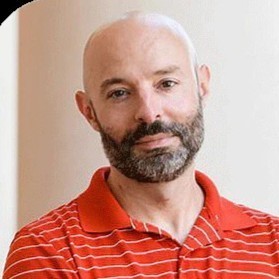
Jordan Frith
- Current position: Pearce professor of professional communication, Clemson University
- Education
- M.S. Technical Communication, James Madison University
- Ph.D. Communication, Rhetoric and Digital Media, North Carolina State University
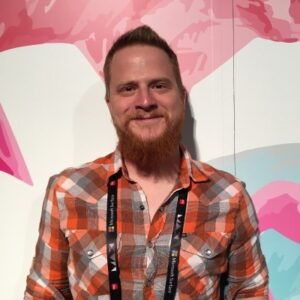
Matt Morain
- Current position: associate creative director, copywriting, Red Hat
- Education:
- B.A. History, Political Science, English, Simpson College
- M.A. Rhetoric, Composition and Professional Communication, Iowa State University
- Ph.D. Communication, Rhetoric and Digital Media, North Carolina State University
- Time in PCOST: During his time in PCOST, Morain worked as a research assistant responsible for planning and developing major online academic resources.

Anne Njathi
- Current position: assistant professor of integrated marketing communication, Pepperdine University
- Education:
- B.A. Journalism and Public Relations, Daystar University, Kenya
- M.A. Corporate Communication, Daystar University, Kenya
- Ph.D. Communication, Rhetoric and Digital Media, North Carolina State University
- Time in PCOST: While in PCOST, Njathi worked on the REU 2022 and 2023 report and the NSF annual report for the RTN for 2022 and 2023. In addition, she worked on publications related to nanoscience and technology.

Nicholas Eng
- Current position: assistant professor, University of Georgia
- Education:
- B.A. Communication Studies, Nanyan Technological University, Singapore
- M.S. Communication, North Carolina State University
- Ph.D. Mass Communication, Pennsylvania State University
- Time in PCOST: During his time in PCOST, Eng worked on the NNCI grant renewal.

Paromita Ghosh
- Current position: customer marketing mananger, B2B and B2B2C marketing, Twill
- Education:
- B.A. English, University of Calcutta, India
- M.S. Communication, North Carolina State University
- Time in PCOST: During Ghosh’s time in PCOST, she worked on numerous scientific papers, developed a communication campaign for NC Community College and conducted qualitative research.

Eileen Searson
- Current position: Product Manager, MedStar SiTEL
- Education:
- B.S. Public Health and Promotion, James Madison University
- M.S. Communication: Public Relations, North Carolina State University
- Time in PCOST: During her time in PCOST, Searson worked as a research assistant for content analysis of Latin American government websites.

Timothy Morton
- Current position: director of enterprise business applications, AFL
- Education:
- B.S. Communication Studies, Business Administration Management, Coker College
- M.S. Communication, North Carolina State University
- MBA, Business Administration and Management, General, Clemson University
- Time in PCOST: During his time in PCOST, Morton researched a range of topics including nanotechnology, social media, risk communication and communication engagement.
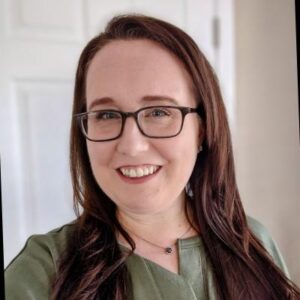
Mary E. Lavelle
- Current position: researcher, American Institutes for Research
- Education:
- B.S. Communication, Northeastern University
- M.S. Communication, North Carolina State University
- Time in PCOST: Lavelle worked as a research assistant on NSF grant with PCOST. She conducted literature searches, reviews and writing annotated bibliographies for risk communication articles.

Roy Schwartzman
- Current position: professor and co-director of the Campus Writing and Speaking Program, NC State University
- Education:
- B.A. Philosophy, University of Georgia
- Honors thesis: Metaphor via Wittgenstein’s Tractatus
- M.A. Speech Communication, University of Georgia
- Thesis: Ontological Foundations of Metaphoric Discourse
- Ph.D. Communication, University of Iowa
- Dissertation: Racial Science, Nazism, and the Genesis of Genocide (winner, National Communication Association Outstanding Dissertation Award)
- B.A. Philosophy, University of Georgia
- Time in PCOST: Schwartzman’s research and teaching related to PCOST encompasses:
- Public argumentation regarding risks and rewards of scientific innovations and emergent technologies.
- Rhetorical and linguistic components involved in advocating and challenging scientific claims.
- Analyzing and counteracting popularization of and adherence to pseudoscience.
- The appropriation of science and technology to promote and justify prejudice.
- Non-rational bases of beliefs about science, technology, and medicine/health.
- Narrative aspects of claims within and about science and technology.
In his capacity as co-director of the Campus Writing and Speaking Program, Schwartzman works alongside faculty across all STEM fields to improve the oral and written communication skills of emerging and established researchers and practitioners (including students and faculty at all levels). This work especially concerns communication of scientific processes, methods, findings, and implications beyond specialized disciplinary audiences.
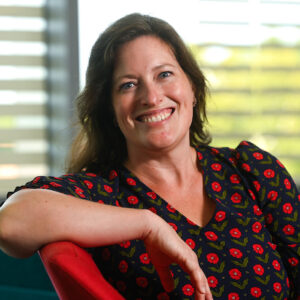
Kirsti Cole
- Current position: professor and co-director of the Campus Writing and Speaking Program, NC State University
- Education:
- B.A. English, University of Montana, Missoula
- Ph.D. English, Rhetoric and Composition, Arizona State University
- Time in PCOST: Cole has spent time working around technology and education, but she’s also published in areas that include the public communication of women’s health and reproductive rights, digital trust and medical agency for women, and women’s reproductive health cycles.

Folasewa Olatunde
- Current position: program evaluator, Juntos program, NC State University
- Education:
- B.Sc. Mass Communication, Redeemer’s University, Nigeria
- M.Sc. Communications Studies, University of Lagos, Nigeria
- Ph.D. Communication, Rhetoric and Digital Media, NC State University
- Time in PCOST: Olatunde worked on the 2024 REU report, 2023-2024 NSF annual report for the RTNN and other AgScience, nanotechnology and health equity and science research and publications.

Mustapha Bakuna Salifu
- Current position: assistant director of assessment, Research Triangle Nanotechnology Network (RTNN)
- Education:
- B.A. Integrated Management Studies, University for Development Studies, Ghana
- M.S. Communication student, NC State University
- Time in PCOST: Salifu submits and maintains IRB clearance, collects samples from the lab director or subordinates to submit to Qualtrics. He collects Qualtrics data and prepares assessment components of the annual report for NSF. He also maintains postings on LinkedIn, Facebook and X RTNN accounts as needed.

Emma Coull
- Current position: Undergraduate research assistant, NC State University
- Education:
- B.A. English, NC State University (May 2025)
- B.S. Science, Technology and Society, NC State University (May 2025)

Jordyn Brautman
- Current position: Undergraduate research assistant, Research Triangle Nanotechnology Network (RTNN)
- Education:
- B.S. Communication, NC State University (May 2025)

Student Involvement Opportunities
Involvement Opportunities
Doctoral Research Assistants
PCOST Hiring Policy for Research Assistants
Doctoral and master’s level students can be hired under PCOST associated grants. We provide competitive hiring in the areas of social science of science (mostly quantitative) and applied social media research. Students either receive stipends with fringe or an hourly wage.
Grants associated with PCOST include NSF, NIH, and some private contract funding. Some students work during the summer on grant and/or contract hires. In 2009, we wrote a White Paper for the National Nanotechnology Initiative on Risk Communication. In 2010 three doctoral students were hired by the Center for Emerging Technologies, LLC to work at a client site outside of Chicago, IL. These are funded positions.
On the horizon we have projects in public understanding of nanotoxicology; health and safety communication; and advanced social media applications.
Students are expected to have research and data based analytical skills as well as technical writing skills. Students associated with the program find themselves taking courses in statistics and methodology in departments across campus. A list of social science courses of interest to potential students is available here.
Master’s Research Assistants
PCOST Hiring Policy for Research Assistants
Master’s students can be hired under PCOST associated grants. We hire students who are in their first year or second year. We provide competitive hiring in the areas of social science of science (mostly quantitative) and applied social media research.
Grants associated with PCOST include NSF, NIH, and some private contract funding. Some students work during the summer on grant and/or contract hires.
During the summer 2011, one of our students interned with the Semiconductor Research Corporation in the Research Triangle. On the horizon we have projects in public understanding of nanotoxicology, TCE contamination and health and safety communication, and advanced social media applications.
For more information contact David Berube, Director (Winston 101C) at dmberube@ncsu.edu or Andrew Binder at arbinder@ncsu.edu.
Provost Professional Experience Program
An opportunity for students to gain professional development experience closely aligned to their major through research and other opportunities.
Engagement Opportunities
Doctoral
- Ph.D. Communication, Rhetoric and Digital Media Course List
- For more information contact David Berube, Director (Hunt Library 5141) at dmberube@ncsu.edu
Master
- M.S. Communication Course List
- For more information contact David Berube, Director (Hunt Library 5141) at dmberube@ncsu.edu
Undergraduate
- B.A. in Communication
- Communication: Communication Media Concentration 2023-2024 Course List
- Communication (BA): Interpersonal, Organizational and Rhetorical Communication Concentration 2023-2024 Course List
- Communication (BA): Public Relations Concentration 2023-2024 Course List
- For more information contact David Berube, Director (Hunt Library 5141) at dmberube@ncsu.edu